Welcome to the thrilling world of iconic racing machines, where speed, power, and precision collide to create legends on wheels. From the sleek curves of Formula 1 cars to the thunderous roar of endurance racers, each famous racing car boasts a unique history and a legion of devoted fans.
Join us on a journey through the annals of racing history as we uncover the stories behind these remarkable cars, from their ground-breaking designs to the triumphs and challenges they faced on the asphalt. Get ready to rev your engines and experience the thrill of the race like never before.
1. Audi Quattro
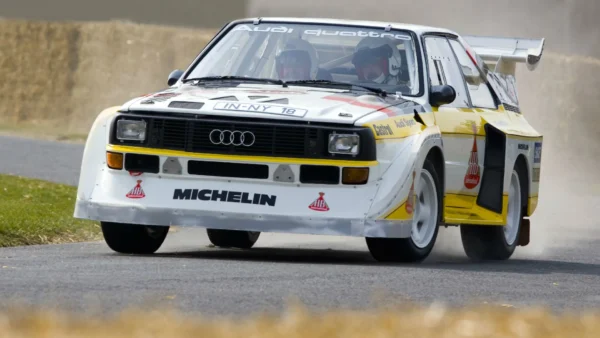
Throughout the early 1980s, Audi controlled rally racing with their range of Quattro race cars. This car costs about $74,417 and has a top speed of 214mph. The Sport Quattro S1 E2 was the peak of Audi’s rally projects, even though the A1, A2, and Sport Quattro were all excellent vehicles in their own right.
Rally tracks were destroyed by the S1 E2, a Group B beast with a 2.1-liter turbocharged five-cylinder engine producing an underappreciated 470 horsepower. Not only that, but the Quattros were supposedly producing close to 600 horsepower before the Group B rallying was canceled permanently.
2. BMW E30 M3
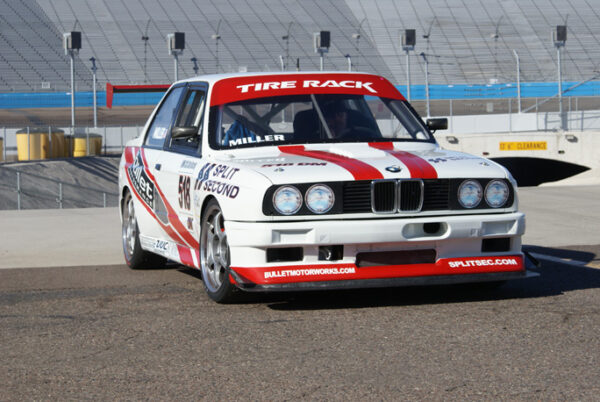
A popular choice among amateur racers worldwide, the BMW M3 has gained recognition in this regard. Magical things happen when someone is driving like an expert. This car is among the famous racing cars. The average price of this car is $82,700, and it has a top speed of 146mph.
From the mid-1980s until the early 1990s, the E30 generation M3 was in demand. It racked numerous victories during this time, especially in touring car competitions.
It took home numerous championships, including one from across the world, two from Europe, two from Britain, four from Italy, and many more. Undoubtedly, it was among the greatest racing cars produced in history.
3. Audi R8
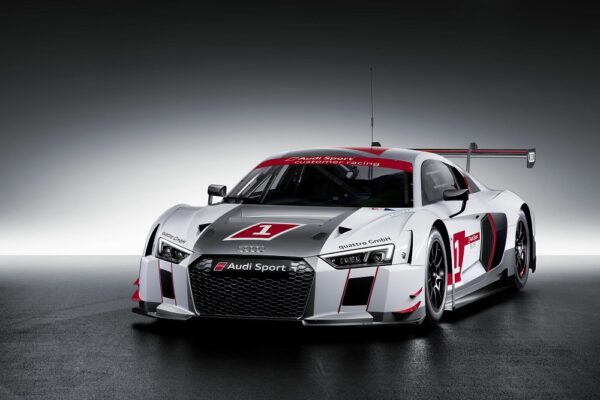
The Audi R8 is among famous racing cars. It’s commonly believed that Audi enjoyed relative ease in the 2000s, winning numerous local sportscar championships and Le Mans and facing minimal opposition from other manufacturers. Still, it’s somewhat of a myth. By many measures, Audi wasn’t alone, even in its debut year. Panoz and Cadillac put it under pressure in 2000, and Dome and Bentley joined in 2001. These initiatives may not have been as well-executed or as popular as Audi’s, but that speaks more to the class of the R8 program. The average price of this car is $270,000, and it has a top speed of 205mph.
With 610PS (449kW) and a 3.6-liter V8 engine that debuted Audi’s innovative Fuel Stratified Injection (FSI) technology, the car also featured several ground-breaking design elements. Even though the R8 had exceptional aerodynamics, its ability to function as a team transformed the game. Based on the theory that the team that spent the least time in the pits would win, Audi designed the R8 with nearly all its parts being easily swappable. This led to an absurd five-minute gearbox change that resulted in the ACO, which oversees Le Mans, revising the regulations.
4. Ferrari 330 P4

Ferrari won all 24-hour Le Mans endurance races between 1960 and 1965. No wonder it’s among the famous racing cars. That winning streak was ended, though, in 1966 by Ford. Ferrari debuted the 330 P3 that same year. This Ferrari car is worth over $8 million and has a top speed of 198.85mph.
But the 330 P3 had a gearbox problem and overheated easily. But Ferrari’s introduction of the 330 P4 in 1967 really got back on track.
The 330 P4 had a V12 engine and improved road grip, although it had a shorter chassis than the P3 model. The 330 P4 was not only more dependable than the model it replaced, but it could also produce up to 450 horsepower. Ferrari achieved an incredible 1-2-3 victory at the 1967 24-hour Daytona event, with the 330 P4 finishing in second place.
5. Ford GT40
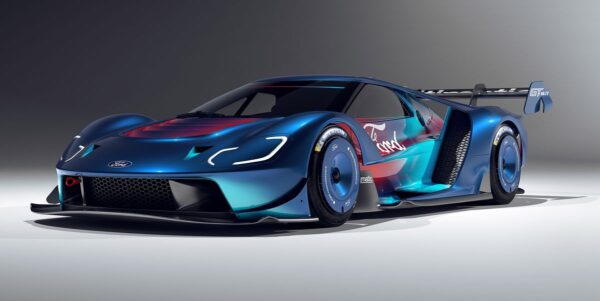
The Ford GT40 has one of the best racing stories ever. It’s among the most famous racing cars. This car is worth over $11 million and has a top speed of 212mph. The GT40 was created in response to Ford’s failed bid to acquire Ferrari, and it was designed to beat Ferrari at their own game: endurance racing. By 1966, the GT40 had completed that job, finishing 1-2-3 in the 24 Hours of Le Mans race. The GT40 would also win Le Mans three years later.
The GT40 was manufactured in four versions: the Mark I, II, III, and IV. The Mark II, III, and IV featured a larger 7.0-liter Ford V8, but the Mark I only used a 4.9-liter engine. The GT40’s shape is still among the most known in motorsports history.
6. Skyline GT-R R32
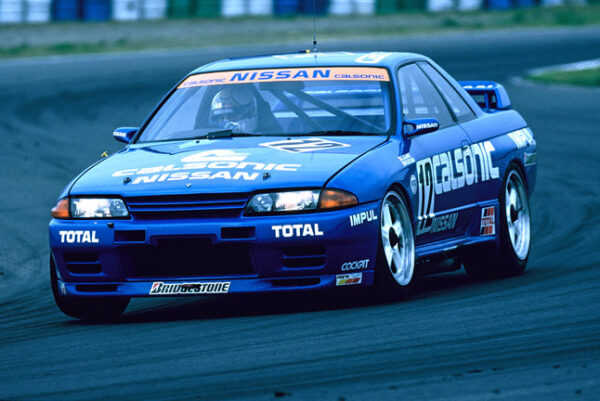
The Skyline GT-R cost between $375,000 and $475,000. It has a top speed of 158mph. Although it’s difficult to consider the Skyline a touring vehicle, it did participate in the Japanese Touring Vehicle Championship in the early 1990s. It would be an understatement to say that it competed, as it dominated. From 1990 to 1993, every JTCC title was won by the R32. The Skyline won every race in 1990 and did it again in 1991, 1992, and 1993.
The Skyline GT-R is still known as “Godzilla” because of its 29-race winning run from 29 races, effectively stopping Group A touring car racing. The R32’s victories at the Bathurst 1,000 in 1991 and 1992 and the Australian Supercars championship for three years added to its JTCC triumph.
7. Lancia Stratos
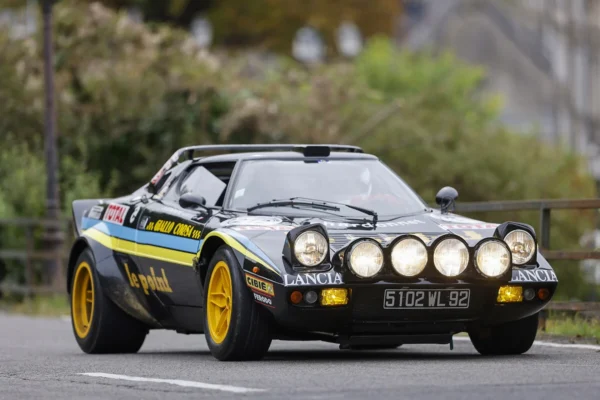
The Lancia Stratos remains one of the most widely recognized racing vehicles in rallying history. It’s among the most famous racing cars. The price of this car ranges between $500,000 to $600,000, and it has a top speed of 144mph. It more than lived up to the history of being the first racing car designed specifically for rallying. Lancia produced over 500 Stratos between 1973 and 1978. A 2.4L V6 engine with 190 horsepower powered the first Lancia Stratos, which debuted in 1973.
Lancia won the Manufacturer’s Championship (WMC) thrice between 1974 and 1976, thanks to the Stratos. The Stratos exceeded expectations as it was built for racing success. These WMC victories cemented Lancia’s Stratos’ status as one of the most renowned racing vehicles ever.
8. Mazda 787B
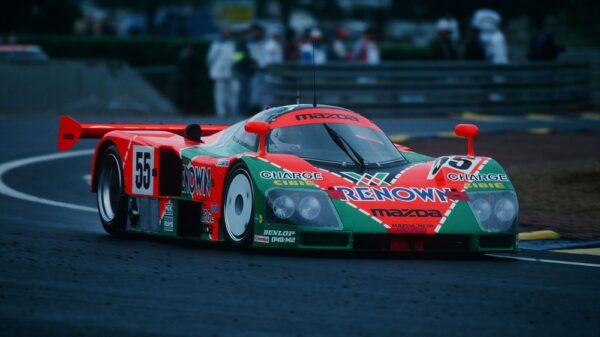
Over the years, several cars have won Le Mans, and some have won it more than once. What, therefore, makes the 787B unique? It’s a classic tale of the underdog that nobody could have predicted. First of all, until Toyota’s victories in recent years, the 787B was the first Japanese car ever to win the 24 Hours of Le Mans overall. No wonder it’s among the most famous racing cars. This car is currently worth $2 million and has a top speed of 210mph.
Second, perhaps more significantly, the 787B is the only car with a rotary engine to win the Le Mans overall. The 787B wasn’t the fastest vehicle in the 1991 Le Mans race, but it won because of reliability and better fuel efficiency. It used a four-rotor motor, which may be the greatest-sounding race engine ever made when operating at maximum speed. A rotary engine won because it was more dependable and consumed less fuel; this is simply one more piece of 787B lore.
9. McLaren MP4/4

The McLaren MP4/4 is an absolute must-discuss when assessing dominant race cars. 1988, the MP4/4 race car driven by Ayrton Senna and Alain Prost was almost unbeatable. It finished first in fifteen of the sixteen races that year, including a four-race winning streak for Senna. Naturally, McLaren became victorious in the Constructors’ Championship that year. The price of this car ranges between $3.6 million and $5 million. It has a top speed of 207mph.
10. McLaren M8
McLaren was a passably good Formula 1 team in the 1960s. This cars cost between $500,000 to $700,000, and it has a top speed of 208mph. It’s often forgotten that McLaren ruled the Can-Am scene for several years. It’s also among the most famous racing cars. Some refer to the championship as the “Bruce and Denny show” in honor of drivers Bruce McLaren and Denny Hulme. The M6 may be on this list, having won two titles and all but a few races in 1967 and 1968.
However, McLaren went one better in the 1969 season, winning every race with the M8. Subsequently, the M8 proved that its success wasn’t a coincidence by winning all but one race in 1970 and, when it was in M8F form, all but two races in the 1971 championship.
11. Porsche 936
Porsche introduced the turbo era of the Le Mans endurance race in 1974. They employed a turbo engine this year for the first time in the race. A turbocharged engine had not yet won the Le Mans race. Porsche would launch the 936, a Spyder-style vehicle with a 2.1L turbocharged engine, in 1976. The Porsche 936 has a top speed of 223mph.
Porsche formally became the race’s first-ever turbo victor in the 1976 La Mans event. A Porsche 936 would win the race again at the next La Mans event in 1977. The 1977 La Mans racer, a Porsche 936-77, was powered by a twin-turbo engine. Porsche’s 936 was a ground-breaking race car that paved the way for the company’s later race vehicles, such as the 956.
12. Porsche 917
Also on our list of the most famous racing cars is the Porsche 917. The Porsche 917 is a unique vehicle since it was successful in two distinct racing classes. This car is currently worth over $15 million and has a top speed of 225mph. The 917 was first intended for endurance racing, competing in events like the 24 Hours of Le Mans. It was successful, taking home the prestigious event in 1970 and 1971, but 1972 the Le Mans rules changed, rendering the 917 obsolete.
Furthermore, Porsche decided to concentrate on the Can-Am racing series rather than retire the vehicle. The large V12 engine would gain turbochargers, allowing the 917 to generate approximately 850 horsepower and win the 1972 championship. The engine was increased in 1973, allowing the 917 to achieve qualifying trim levels of up to 1,500 horsepower. The final 1973 Porsche 917 is regarded by many as the most powerful sports car racer in history.
13. Type C Streamliner and Auto Union Type C/D Hill Climb
Audi participated in Auto Union, which conducted a prosperous Grand Prix program in the middle of the 1930s with its Type A, B, C, and D race vehicles. These famous racing cars were unique for their day, with a mid-engine layout. The 16-cylinder engines of the Type A, B, and C cars were replaced with 12-cylinder engines in the Type D vehicle. The type c streamliner has a top speed of 298mph and is worth $6million.
There are two unique Auto Union-type race cars that stand out. The Streamliner came first. With its ultra-aerodynamic shape, the Streamliner was built on a Type C body and was intended to maximize the Type C’s approximately 560 horsepower. You read that correctly: in 1937, the Streamliner reached 400 km/h (248 mph) during Grand Prix automobile testing on the autobahn!
The following year, the same engineers decided to construct a Type D racer equipped with the Type C’s engine for use in hill climbing. Two tires were mounted on either side of the vehicle’s back to ensure all that power reached the road.
14. Chaparral 2j
Chaparral studied aerodynamics to get an advantage in the competitive realm of Can-Am racing. After adding enormous wings to the business’s earlier race vehicles, Chaparral devised a clever method for his new 2J car always to have the best downforce, independent of speed. It’s also among the most famous racing cars.
Powered by a snowmobile engine, two sizable fans that were salvaged from a tank were positioned on the back of the vehicle. The car would be effectively pinned to the ground as it would draw air up from below it. Although the 2J was significantly faster than any of its rivals, it was incredibly unstable and was later banned from racing. This car is now worth over $14 million and has a top speed of 220mph.
15. Suzuki Escudo Dirt Trail
There is nothing quite like the Pikes Peak hill climb. The climb is essentially an unrestricted, regulation-free racing competition where drivers, engineers, and fabricators can test the cutting edge of automotive technology. Nobuhiro “Monster” Tajima dominated the climb from 1992 until 2011, winning nine times overall, including six from 2004 to 2011. The vehicle he drove to victory in 1998 caught the public’s attention, even if he was successful during the six-year winning streak while operating a radical Suzuki XL-7 that was eventually embodied as an SX4.
Furthermore, the car was first envisioned in 1995 and was named Escudo Dirt Trail. It had two 2.5-liter V6 turbocharged engines, one at the front and one at the back. They provided power to all four wheels with a combined 981 horsepower. The Suzuki Escudo has a top speed of 250mph. It was a monster befitting a monster driver thanks to its aerodynamics, which produced every known downforce.
16. Tyrrell P34
When racing, how can one increase their grip? It’s easy; just add more wheels. The Tyrrell P34 has four smaller front wheels and regular-sized rear wheels. This not only increased the front contact patch and decreased drag, but it also made more braking force possible. This is why it’s among the famous racing cars.
Furthermore, the so-called “six-wheeler,” which debuted for the 1976 racing season, showed promise as a competitor by placing ten times on the podium. That year, Tyrrell even secured the victory in the Swedish Grand Prix with an outstanding 1-2 finish. The car was less competitive in 1977, and by the 1978 season, aerodynamic advancements had rendered the six-wheel configuration obsolete.
While there have been other six-wheeled Formula One cars, this one is unquestionably the most famous and identifiable. This car costs about $450,000 to $600,000 and has a top speed of 200mph.
17. Penske PC-23
The Penske PC-23 created such a stir in the IndyCar scene because it was so perfect. Except for four championship rounds, the base vehicle was an absolute beast that easily won the Constructors’ Crown in 1994, handily defeating Penske drivers Paul Tracey, Emerson Fittipaldi, and Al Unser Jr. by nearly 100 points. However, Penske’s competitors didn’t go fully insane due to their dominance over the entire season.
Actually, a singular conduct at the season’s most significant race, the Indy 500, infuriated the other teams. Penske discovered a legal loophole that enabled them to improve upon their already clearly superior car at Indy. Penske and engine builder Ilmor created a unique engine that produced roughly 150–200 PS (110–147 kW). This car has a top speed of 245mph.
18. Dodge Charger Daytona
In the 1960s, top American automakers were vying for championships in NASCAR. Following a dismal 1968 campaign, Dodge redesigned the Charger Daytona, a high-performance limited edition model, and introduced the Charger Daytona in 1969. It’s also among the most famous racing cars. The average price of this car is $445,500 and has a top speed of 200mph.
Winning NASCAR races was the only motivation behind the development of the Charger Daytona. Its extravagant body makeover, which included a big rear wing to improve aerodynamics, was based on the 1969 Dodge Charger R/T. The 7.2-liter V8 engine that powered the Charger Daytona produced up to 425 horsepower, making it extremely fast.
19. Ferrari 250 GTO
The iconic 250 GTO is the pinnacle of Ferrari vehicles with a top speed of 174mph. Early in the 1960s, the 250 GTO was built to fulfill FIA homologation standards for the Group 3 GT class, which would face off against cars like the Jaguar E-Type and Shelby Cobra. The Ferrari 250 GTO was an enormous success, taking home three Le Mans titles and other notable victories. Currently, one of the most sought-after collector automobiles is the 250 GTO. One allegedly fetched an absurd $70 million in a private sale.
Conclusion
Famous racing cars have left an indelible mark on automotive history, captivating enthusiasts worldwide with their innovation, speed, and iconic designs. From Formula 1 legends to Le Mans champions, these remarkable machines continue to inspire generations of motorsport lovers.
